Complete Solutions to Exercise 7.1 of chapter NEWTON'S LAWS OF MOTION 2 of Class 11 book with complete answers and questions
| Class 11 | PHYSICS |
| Chapter | NEWTON'S LAWS OF MOTION 2 |
| CENGAGE PHYSICS | Exercise 7.1 |
| Number Of Questions | 25 |
| Academic Year | 2023-24 |
A block weighing `20N` rests on a horizontal surface . The coefficient of static friction between the block and surface is `0.4` and the coeffiecient of kinetic frictioni `0.20`
a.How much is the friction force excerted on the block?
b. How much will the friction force be if a horizontal force of `5 N` is exerted on the block?
c. What is the minimum force that will start the block in motion ?
d. What is the minimum force that will keep the block in motion once is has been started ?
e. If the horizontal force is `10 N` what is the friction force?04:12View SolutionA block of mass `m` rests on a rough floor . The coefficient of friction between the block and the floor is `mu`
a. Two boys apply force `P` at an angle `theta` to the horizontal. One of them pushes the block , the other one pulls. Which one would reqire less efferts to cause impending motion of the block?
b. What is the minimum force required to move the block by pulling it ?
c. Shown that the block is pushes at a certain angle `theta _(0)` it cannot be moved fro whatever the value of `P` be09:52View SolutionWhat is the value of friction `f` for the following value of applied force `F` ?
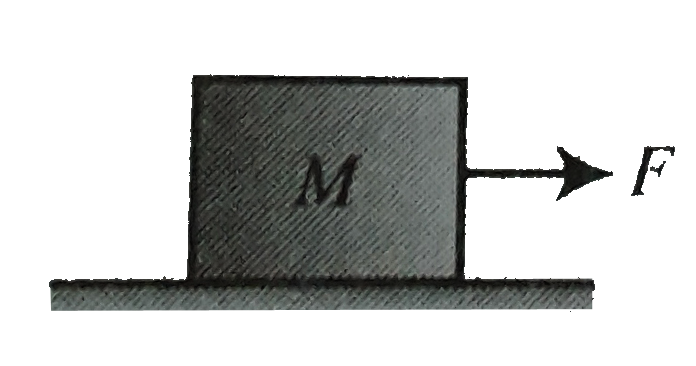
a. `1 N` b.`2 N` c.`3 N` d.`4 N` e`20 N`
Assume the coefficient of friction to be `mu_(s) = 0.3 : mu_(k) = 0.25` Mass of the body is `m = 1 kg`. (Assume `g = 10 ms^(-2))`02:48View SolutionA block of mass `5 kg` rests on a rough horizontal surface. It is found that a force of `10 N` is required to make the block just move However , once the motion begains, a force of only `8 N` is enough to maintain the motion find the coefficient of kinetic and static friction between the block and the horizontal surface
 02:54View Solution
02:54View SolutionA body of mass `m` is kept on a rough horizontal surface of friction coefficient `mu` . A force `P` is applied horizontally , but the body is not moving .Find the net force `F` exerted by the surface on the body .
02:23View SolutionDetermine the magnitude of frictional force and acceleration of the block in each of the following cases :
 07:34View Solution
07:34View SolutionA `5 kg ` box is moving straight across the floor at a constant speed by a force of `30 N` as shown in figure
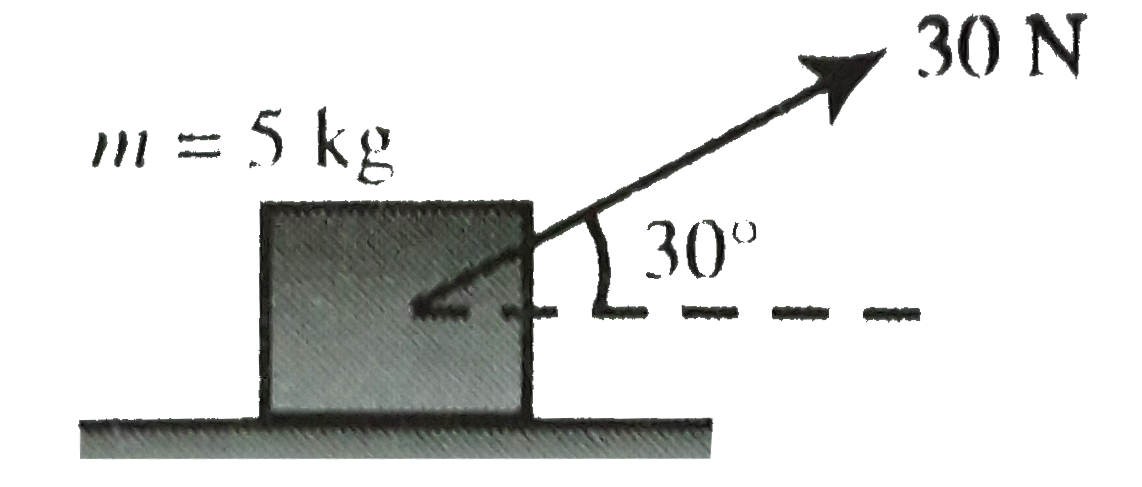
a. How large a friction force impends the motion of the box ?
b. Find `mu_(k)` between the box and the floor03:25View SolutionA block of mass `m = 3 kg` slides on a rough inclined plane of cofficient of friction `0.2` Find the resultant force offered by the plane on the block
 03:40View Solution
03:40View SolutionA block slides down on inclined plane (angle of inclination `60^(@)` ) with an accelration `g//2` Find the coefficient friction
 02:47View Solution
02:47View SolutionAn insect craws up a hemispherical surface very slowly (see fig.). The coefficient of friction between the insect and the surface is `1//3`. If the line joining the center of the hemispherical surface to the insect makes an angle `alpha` with the vertical, the maximum possible value of `alpha` is given by
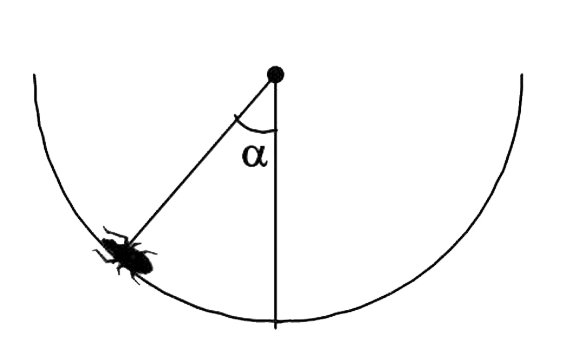 02:25View Solution
02:25View SolutionIn Fig if `f_(1) , f_(2)` and `T` are the friction forces on `2 kg` block `3 kg` block and tension in the string respectively the find their value initially before applying the forces tension in string was zero
 05:48View Solution
05:48View SolutionFind the friction on the `2 kg` block in the arrangement shown in figure
 02:34View Solution
02:34View SolutionA goods train has `25` compartments. Will the tension in coupling between the fourth and fifth compartment be the same as that in the coupling between the 21st and the 22nd compartments ?
02:50View SolutionA box of bananas weighing `40.0N `rests on a horizontal surface is `0.40 ` and the coefficient of kinetic friction is `0.20`
a. If no horizontal force is applied to the box and the box is at rest , how large is the friction force excered on the box ?
b. What is the magnitude of the friction forces if a monkey applies a horizontal force of `6.0 N ` to the box and the box is initial at rest?
c. What minimum horizontal force must the monkey apply to start the box in motion ?
d. What minimum horizontal force must the monkey apply to keep the box moving at constant velocity once it has been starts?
e. If the monkey applies a horizontal force of `18.0N ` What is the magnitude of the friction force and what is the box's acceleration ?07:46View SolutionA mass of mass `60 kg` is pulling a mass `M` by an inextensible light rope passing through a smooth and massless pulley as shown in figure. The coefficient of friction between the mass and ground is `mu = 1//2` find the maximum value of `M` that can be pulled on the ground
 07:55View Solution
07:55View Solutiona. Block A , as shown in figure weight `60.0 N` The coefficient of static friction between the block and the surface on which it rest is `0.25` .The waight w is 12N The system is in equlibrium .Find the friction for excerted on block A
b. Find the maximum weight w for which the system will remain in equlibrium 05:13View Solution
05:13View SolutionIf the coefficient of friction between `M` and the inclined surfaces is `mu = 1//sqrt(3)` find the minimum mass `m` of the rod so that the of mass `M = 10 kg` remain stationary on the inclined plane
 04:35View Solution
04:35View SolutionA block of mass m is placed on an inclined plane. With what acceleration A towards right should the system move on a horizontal surface so that m does not slide on the surface of inclined plane? Also calculate the force supplied by wedge on the block. Assume all surfaces are smooth.
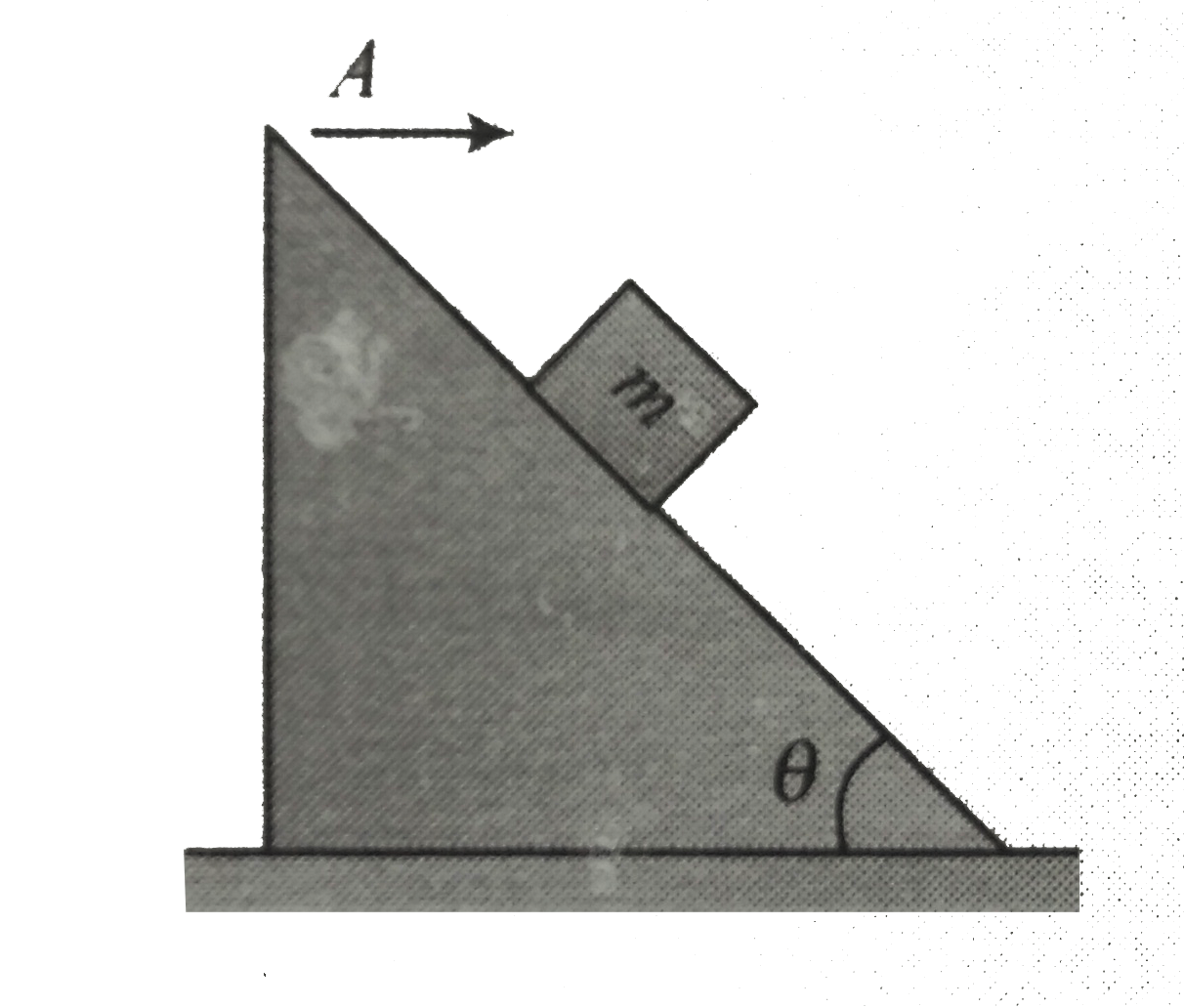 02:46View Solution
02:46View SolutionA block of mass `5 kg` rests on a rough horizontal surface. It is found that a force of `10 N` is required to make the block just move However , once the motion begains, a force of only `8 N` is enough to maintain the motion find the coefficient of kinetic and static friction between the block and the horizontal surface
 02:54View Solution
02:54View SolutionA thin rod of length `1 m` is fixed in a vertical position inside a train, which is moving horizontally with constant acceleration `4 ms^(-2)`.A bead can slide on the rod and friction coefficient between them is `0.5`. If the bead is released from rest at the top of the rod , it will reach the bottom in
03:01View SolutionWith what minimum velocity should be projected from left end A toward end B such that it reaches the other end B of conveyer belt moving with constant velocity v The friction coefficient between block and belt is `mu`
 02:32View Solution
02:32View SolutionA block mass `m = 2 kg` is accelerating by a force `F = 20 N` applied on a smooth light pully as shown in fig 7.86 If the coefficient of kinetic friction between the block and the surface is `mu = 0.3` find its acceleration
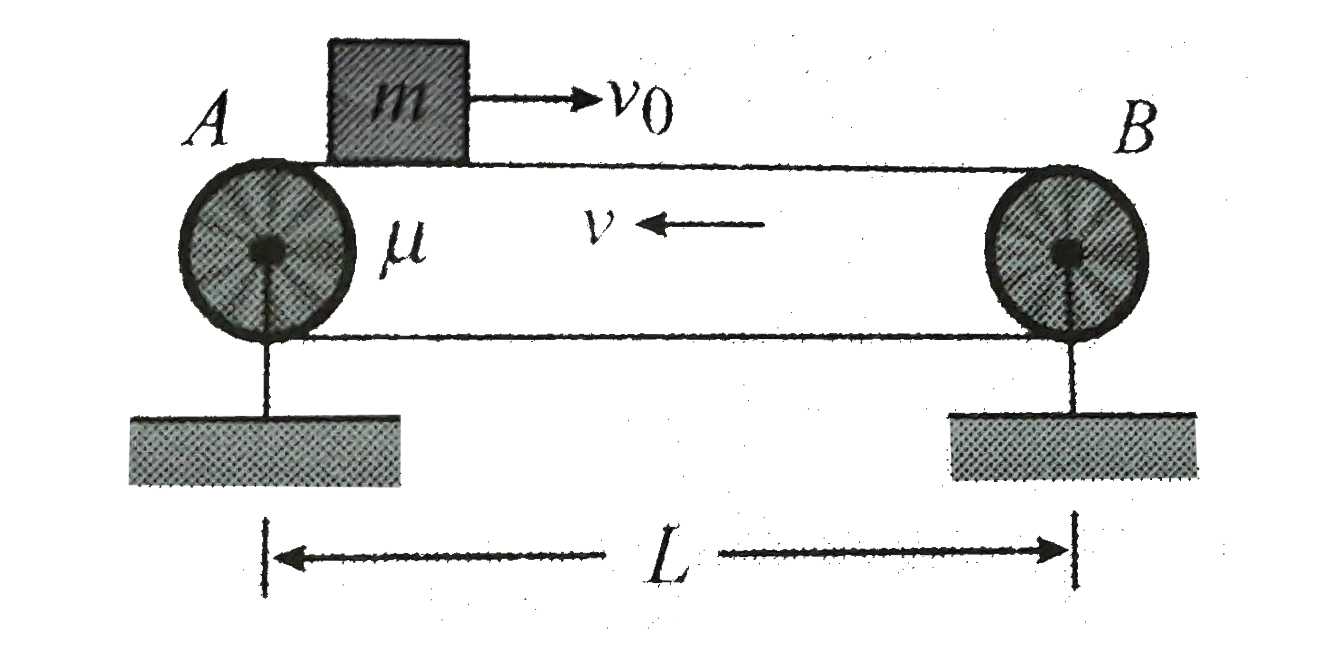 02:30View Solution
02:30View SolutionA uniform chain of length L and mass M overhangs a horizontal table with its two third part n the table. The friction coefficient between the table and the chain is `mu`. Find the work done by the friction during the period the chain slips off the table.
03:07View SolutionTwo small spheres of masses `m_(1)` and `m_(2)` are connected by a light right rod.The system is placed between a rought floor and smooth verticle wall as shown in Fig. The co-efficent of friction between the floor and the sphere of mass `m_(2)` is` mu` .Find the minimum value of `theta` so that the system of masses does not slip
 06:45View Solution
06:45View SolutionTwo blocks of masses `m_(1) amd m_(2)` connected by a string and placed on an rough inclined plane having coefficient of friction `mu` is shown in fig 7.89 Find the retio of masses `m_(1) //m_(2)` so that

a. the block `m_(1)` start moving downward
b. the block `m_(1)` start moving upwnward
c. no motion takes plane06:05View Solution
Exercise 7.1 questions and complete solutions for chapter NEWTON'S LAWS OF MOTION 2 of CENGAGE PHYSICS (ENGLISH) of Class 11
